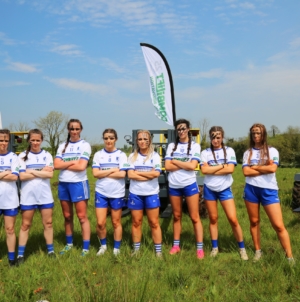-
AI startup Onton raises $7.5M to reinvent the way the world discovers and decides what to buy - November 26, 2025
-
Forklift Market Positions for Recovery as Confidence Expected to Build from 2026 - November 26, 2025
-
PROCare achieves 300% order capacity increase and 99% picking accuracy with Forterro’s ERP solution, Orderwise - November 26, 2025
-
DHL boosts operational efficiency and customer communications with HappyRobot’s AI Agents - November 25, 2025
-
STENA LINE TEAMS UP WITH CAMERA TELEMATICS TO DRIVE SAFETY IMPROVEMENTS AT IRISH SEA PORTS - November 25, 2025
-
Another design award for Toyota’s lithium-ion Traigo_i counterbalanced forklift - November 21, 2025
-
Stuut Technologies Raises $29.5 Million Series A Led by Andreessen Horowitz to Automate Accounts Receivable Work - November 20, 2025
-
INCREASED DIGITAL INVESTMENT REQUIRED TO KEEP PACE WITH 2026 CUSTOMS CHANGES - November 19, 2025
-
FULFILMENT SOLUTIONS FOR SPORTS MERCHANDISE: KEEPING OUR EYE ON THE GAME - November 19, 2025
-
COMPLEX, COSTLY & CONFUSING – THE END OF DE MINIMIS - November 19, 2025
What Is A ‘Safe’ Area When Handling Flammable Material With A Lift Truck? Pyroban Explains.
Explosion protection company Pyroban has seen year on year growth for its Gascheka duo “added safety” system. But why do so many companies choose this product when it may not be a legal requirement?
“When you handle potentially hazardous liquids or gases, a risk assessment will define the high-risk areas as either Zone 1 or Zone 2 in line with ATEX* so that businesses can select the necessary explosion protected equipment,” says Rob Vesty, Sales Manager for Pyroban. “Anywhere outside of these classified areas is considered ‘safe’, often requiring no special equipment.”
However, Pyroban believes that when it comes to handling potentially hazardous materials onsite, there are no safe areas as boundaries are not fixed.
“For example, gases can easily cross from a Zone 2 area into an area considered ‘safe’,” explains Rob. “Then it only takes one spark to cause an explosion.”
Standard lift trucks have multiple ignition sources, such as heat or sparks, so regardless of where they operate on a site where hazardous areas exist they need to have some form of protection. This also applies to cranes, access platforms and other plant or materials handling equipment which are expected to operate in these ‘safe’ areas.
“Without strict supervision, it is easy for vehicles to cross from a ‘safe’ area into a Zone 2 area without realising it. For example, a forklift moving pallets from a storage area into a loading bay ready for despatch.”
To help reduce this risk and support operations with protection for ‘safe’ areas where full explosion protection is not required, Pyroban developed the Gascheka duo added safety system. This gas detection system monitors the surrounding area of any type of vehicle, from forklift trucks and pallet stackers, to vans and transportation vehicles and can be fitted to diesel, electric or LPG vehicles.
If gas or vapour is detected at 10% LEL (propane in air) the driver gets visual/audible warnings and should drive away from the area, warning any colleagues of the imminent danger. If gas or vapour levels rise to 25% LEL the truck will automatically be brought to a controlled stop preventing an explosion, and protecting the driver, site and supply chain.
“We have seen a growing number of large fleets specify Gascheka duo, particularly from those handling bottled gas and third party logistics companies who are responsible for transporting flammable material for major FMCG brands,” says Rob. “Risk assessments may have ruled out full explosion protection, but the 3PL, and insurance company, typically recognises the risk of explosion and wants to do something to protect the large workforce at risk in distribution centres.”
A Gascheka duo control module provides an interface between the operator and the equipment and is fitted within easy reach of the driver. It is used to start the system and informs the operator when any gas is detected. Pyroban offers the choice of two gas sensing head technologies, Pellistor or Infrared, to suit the application.
For even greater added safety, any equipment fitted with Pyroban Gascheka duo requires a gas test before it will allow the vehicle to start up, checking that the gas sensing heads are calibrated correctly. It is easy to fit onsite and is comparatively low cost compared to full explosion protection.
































